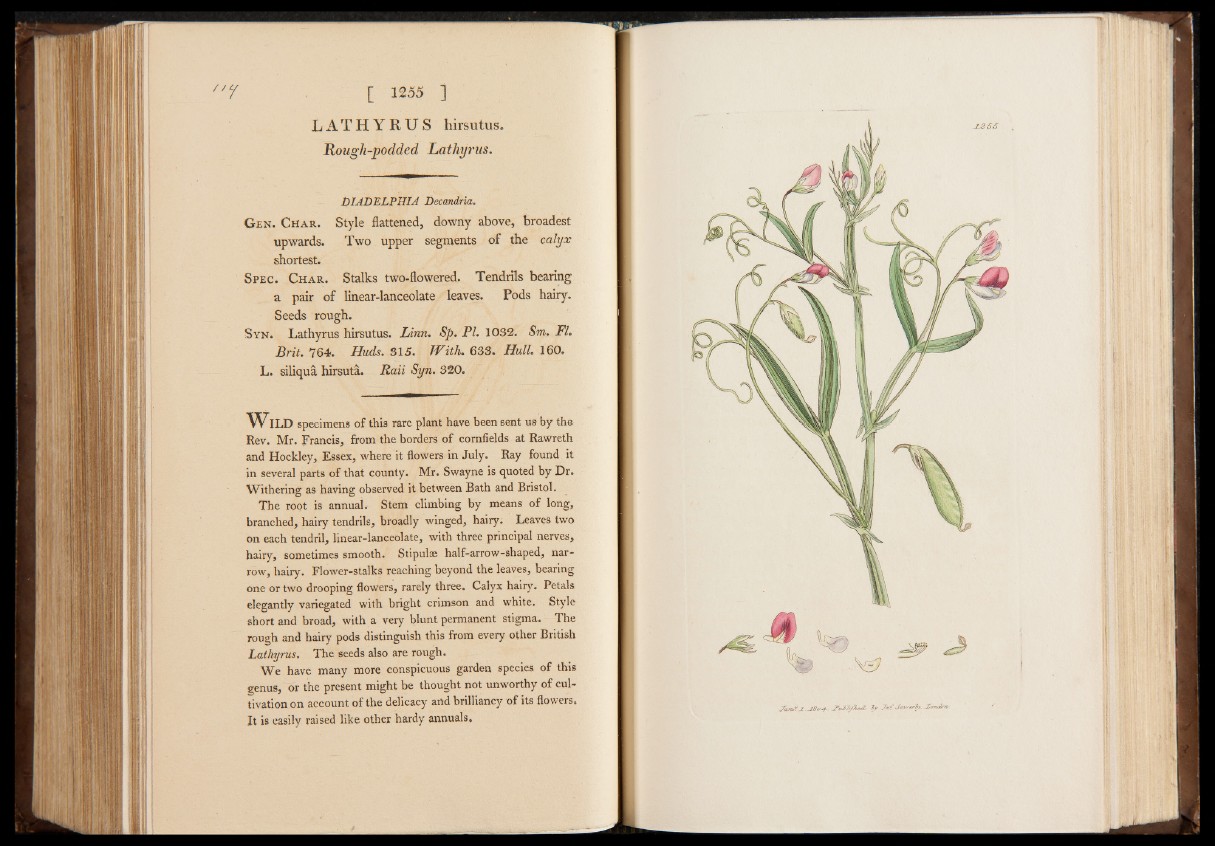
Pf [ 1255 ]
L A T H Y R U S hirsutus.
Rough-podded Lathyrus.
DIADELPHIA Decandria.
G e n . C h a r . S ty le fla tten ed , d ow n y a b o v e , b ro a d e st
u pw a rd s. T w o u p p e r se gm en ts o f th e calyx
sh o rte st.
S p e c . C h a r . Stalks two-flowered. Tendrils bearing
a pair of linear-lanceolate leaves. Pods hairy.
Seeds rough.
S y n . Lathyrus hirsutus. Linn. Sp. PL 1032. Sm. FI.
Brit. 764. Huds. 315. With. 633. Hull. 160.
L. siliqua hirsuta. Raii Syn. 320.
W il d specimens of this rare plant have been sent us by the-
Rev. Mr. Francis, from the borders of cornfields at Rawreth
and Hockley, Essex, where it flowers in July. Ray found it
in several parts of that county. Mr. Swayne is quoted by Dr.
'Withering as having observed it between Bath and Bristol.
The root is annual. Stem climbing by means of long,
branched, hairy tendrils, broadly winged, hairy. Leaves two
on each tendril, linear-lanceolate, with three principal nerves,
hairy, sometimes smooth. Stipulse half-arrow-shaped, narrow,
hairy. Flower-stalks reaching beyond the leaves, bearing
one or two drooping flowers, rarely three. Calyx hairy. Petals
elegantly variegated with bright crimson and white. Style
short and broad, with a very blunt permanent stigma. The
rough and hairy pods distinguish this from every other British
Lathyrus. The seeds also are rough.
We have many more conspicuous garden species of this
genus, or the present might be thought not unworthy of cultivation
on account of the delicacy and brilliancy of its flowers.
It is easily raised like other hardy annuals.